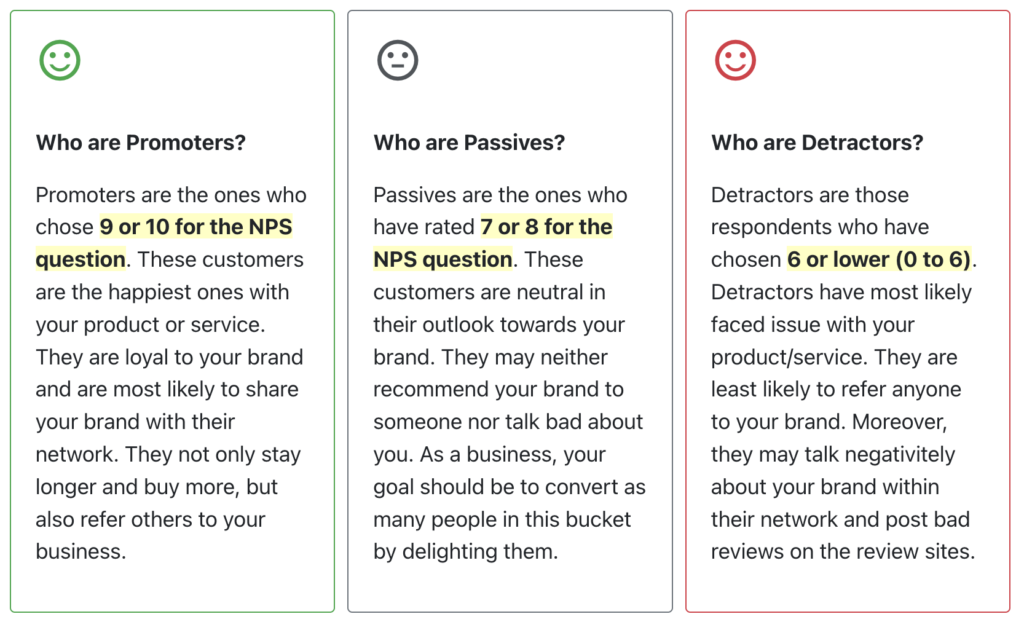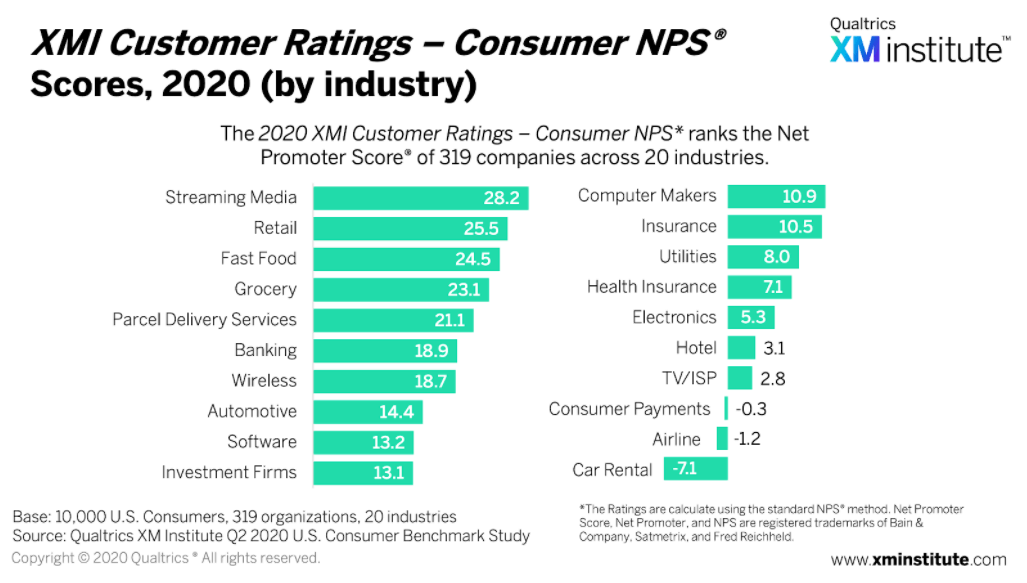A step-by-step guide to collecting and analyzing Net Promoter Score (NPS)
What is net promoter score? Why it is important for you? How to measure and analyze?

What is Net Promoter Score and why should you care?
Are your customers happy? How many of your customers are satisfied with your product or service? How many of them are disatisfied? How do you measure the satisfaction level of your customers?
Net Promoter Score (NPS) is a widely accepted benchmark to measure the satisfaction level of your customers. It’s reliable metrics to measure the loyalty, used by companies of all sizes across the industries. Today NPS growth is a critical metrics tracked by many customer-centric businesses. A growing NPS over a period of time leads to retention, referral and ultimately higher revenue for your business.
Here is a step-by-step guide on how to implement NPS in your organization.
Step – 1: Design the NPS Survey
Main NPS question
Main NPS question (also known as the “ultimate question”) asks the respondent on her likelihood to recommend friends/family/colleague to the business/product/brand. The choice is an 11 point scale ranging from 0 to 10.

Follow-on question
To get feedback on why the respondent selected that score, typically a follow-on question is asked. This question can be free-form text to capture the thought of the respondent behind the response. This response can then be analyzed either manually or automatically to identify the key improvement areas.
Follow-on question for free text response:

Additional questions
You can ask 2-4 additional questions apart from the 2 questions asked above. But it’s recommended to keep the number of questions around 4-6 to get maximum response.
Step – 2: Send the Survey
Once you decide on the survey questions, it’s the time to send the Survey to your respondents. There are multiple ways you can send the NPS survey. You can send the survey link via Email, SMS, WhatsApp etc. An NPS tool like Affiniv lets you send the Survey embedded inside the email. You can also embed the Survey in your web pages to get better response rate.

Survey embedded in the email improves the response rate

Survey embedded in the website.
Step - 3: Calculate NPS

The NPS Formula
Now that we have categorized respondents into multiple buckets, it’s time to dive into the NPS formula.
Net Promoter Score = (Percentage of Promoters – Percentage of Detractors).
Let’s say you have 100 responses. Out of them, 60 are Promoters (score of either 9 or 10). 30 are Passives (score of either 7 or 8). And 10 are Detractors (score between 0 and 6).In the above example: Percentage Promoters = 60% Percentage Passives = 30% Percentage Detractors = 10%The NPS is (60 – 10) = 50.Tip: If you notice, the passives are not taken into account for the calculation.

NPS ranges between -100 to 100
Lower the number, the poorer the customer experience. Higher number indicates that you have a healthier business with happier customers. A business with high NPS score would typically see 2 things that help them grow.
1. Customers buy more and stay with the business for a longer term. Resulting in higher revenue from existing customers.
2. Their customers refer new customers to the business.
What’s a good NPS?
Inventors of NPS system (Consulting firm Bain & Co.) suggest the following –
– Less than 0 (Negative NPS) – Not good (More detractors than promoters)
– NPS > 0 – Good
– NPS > 25 – Favorable
– NPS > 50 – Excellent
– NPS > 80 – World class
Read on for more details on how to analyze the score, NPS benchmarks and how to act based on the score.
Step – 4: What to do next? Analyze & Improve
Ok. Now you have a score! How do you know whether it’s good or bad? And what should you do next? Measuring and benchmarking your NPS is only the beginning. The real business lift comes from using the customer feedback to truly improve your business.What is a good Net Promoter Score? (Continued…)
While the above mentioned ranges for NPS can be used as guidance, there is no one-size-fits-all number for NPS. NPS varies widely across industries. For example, in the 2020 XMI customer ratings, report, Streaming Media and Retail industries had an average NPS of 28 and 25 respectively. Where as airlines, car rental businesses have average negative NPS. For software companies, the highest NPS captured in the study was 38 with the average of 14. From the above picture it’s clear that within the industry there is a good deal of variation. This can be due to several reasons – number of suppliers, competitive dynamics, industry specific factors, geographical regions etc.In case of software companies, for example, there are more options to choose from than it used be earlier. This results in higher expectations from a Software vendor and consequently a lower NPS.There are also cultural biases to keep in mind. For example in some countries, it may be considered impolite to provide bad rating. As a result you may see more passives than detractors. Some industries like financial services, a loan denial may result in bad customer feedback. It’s important to benchmark yourself against your best in class peers as opposed to chasing a number.
From the above picture it’s clear that within the industry there is a good deal of variation. This can be due to several reasons – number of suppliers, competitive dynamics, industry specific factors, geographical regions etc.In case of software companies, for example, there are more options to choose from than it used be earlier. This results in higher expectations from a Software vendor and consequently a lower NPS.There are also cultural biases to keep in mind. For example in some countries, it may be considered impolite to provide bad rating. As a result you may see more passives than detractors. Some industries like financial services, a loan denial may result in bad customer feedback. It’s important to benchmark yourself against your best in class peers as opposed to chasing a number.Benchmark against your industry’s best (Not average)
It sounds obvious, but you should benchmark yourself with the best in your industry segment. And not the average score. For example, if you are a software company, you should aim for close to 40 NPS. Not the industry average, which is 14.Analyze the Why
Score is important, but the text feedback that you collect in the survey is the real goldmine. The descriptive feedback contains the “why” behind the score. This feedback must be shared across the team (both operating as well as executive) on a regular basis. An NPS tool like Affiniv has the option to tag each response and identify the important areas of improvement. You can analyze the feedback manually or use automated text analysis to discover the most common issues.Analyze score and feedback for each segment
To further analyze, you can segment responses by key attributes. For example: an ecommerce business may analyze NPS by city, product type, user demographic etc. A software/SaaS business can analyze NPS by attributes like country, language, industry, plan type, user role etc. If you find that customers in a certain city or industry giving you low score, then you can further analyze the issue and plan the action accordingly.Beat your own scores
Step – 5: Act and improve continuously
Ready to start listening to your customers in 10 minutes?
Yes, that’s as much time it takes to get going. Dive in and try it out. We are standing by!
